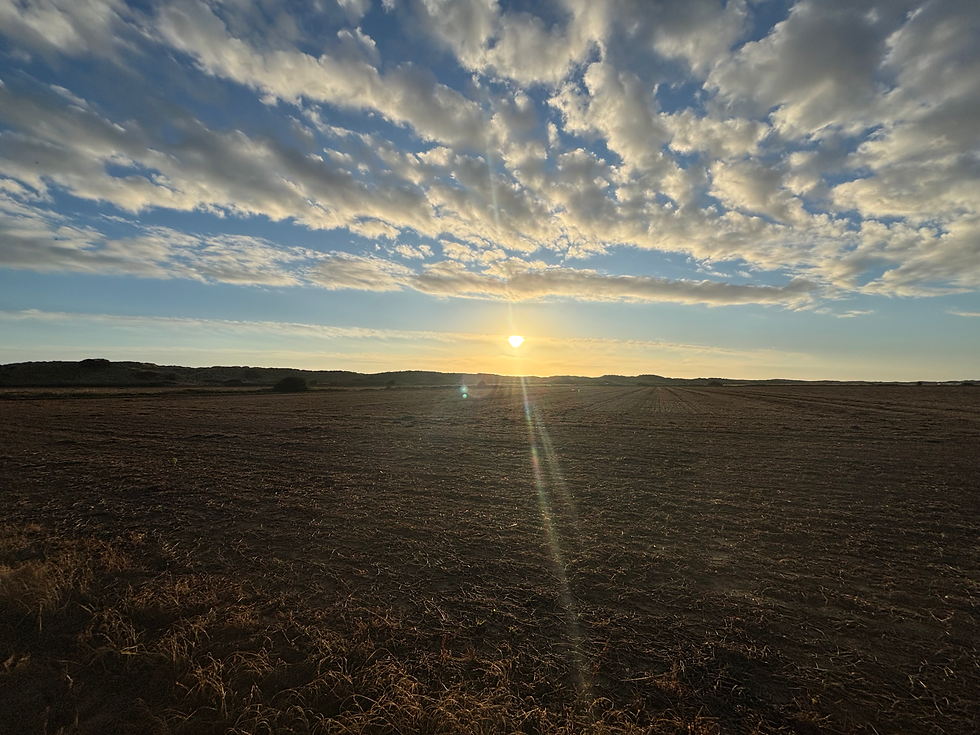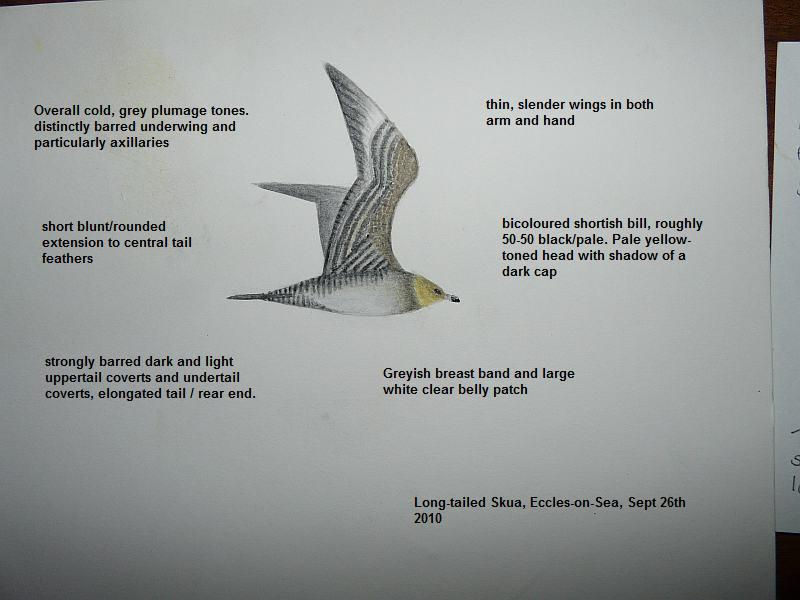Pacific Golden Plover, Waxham
- tg42lowcarbonbirding
- Sep 12
- 6 min read
Updated: Sep 13

Pacific Golden Plover, Waxham, Sep 6-8
Saturday morning was another predictable disappointment on the migrant front with only a Willow Warbler of note. A flock of Golden Plover flew south then north offshore but otherwise it was dull as ditchwater. I headed off home to have some coffee and practise my arpeggios, with little expectation that things would get any more exciting.
However, after a couple of hours sat with the guitar, Andy called. He asked if I was at home and when I replied that I was very much at home, he asked if I could get down to Waxham with a scope as soon as possible. The reason being that he’d just heard a Spotted Redshank call and looked up to see that the bird giving the call was a Golden Plover-type. The bird in question called twice – a typical chu-wit. When you hear that call from a Golden Plover type bird, then it’s game on as it’s the distinctive flight call of a Pacific Golden Plover!
Below is an example of the typical chu-wit call. Very distinctive! A slightly louder chu-EET is also given.
I arrived very shortly after at the Money Lane fields. The bird had flown in and joined a flock of 100+ Lapwings and about 35 Golden Plovers. The field was stubble and it was immediately apparent that seeing the bird was going to be an absolute nightmare. The flock was largely distant and all that was visible of the individual birds was some of the heads. And it stayed that way for hours. A very few birds would stand up – still being only half visible – and walk a short way before sitting down again for another age. This continued for about three hours. Then the birds were spooked by something and they all got up. It was all a bit panic stations as we tried to follow the birds in the melee. It was almost impossible to get views of the underwings as the bird flew up high. After a few minutes the birds returned in smaller groups and as they landed, one bird lifted its wings and showed an apparently grey-washed underwing. We both exclaimed something like “Fuck! That must be it.” But the view was again so brief that it wasn’t good enough to be absolutely sure of the identification. The bird in question, walked a few steps showing a relatively long and thin neck and looking leggy, but then sat down largely obscured again.
Things remained like this for the next hour or so, during which Andy had to leave. I stuck it out for yet another hour but all I got for it was another brief glimpse of what looked like a darkish underwing flash across the scope. Eventually the light started to go and after almost 6 hours of patient waiting, I returned home frustrated at the afternoon’s events.
Undaunted, I got up shortly after first light and as soon as the light was reasonable, I made my way the short distance to the Money Lane area. On arrival, it was apparent that the birds were in the same field but a bit closer. Not long after I put the scope up, some of the lapwing became agitated and flew. This prompted the whole flock of 100 or so Lapwings and numerous Med Gulls to flush. No sooner had the birds got into the air than I heard the Pacific give a clear chu-EET twice and then again a few seconds later from slightly further away. I couldn’t believe my luck and immediately called Andy who was looking at the sea. I watched the birds for a while but it was very clear that they were doing exactly the same as the previous day – nothing. It was again almost impossible to even see them. I stayed for another hour or so until a Peregrine shot low across the field and scattered the entire flock of Meds, Lapwings, Starlings and plovers. Again, flight views were very limited as they flew off to Brograve and the morning light was against me, making it almost impossible to see any of the underwings in the necessary detail.
The birds didn’t return apart from a short-staying 10 individuals and I eventually gave up a second time, returning home cursing my luck but pleased to have at least confirmed the bird was still there. Andy checked the area later but no plovers were visible. A flock of 30 Glossy Ibis flew over Tim at Hickling Priory and moved across the north end of the village to Eccles where Andy picked them up directly above his house. A few migrants dropped in over the afternoon and we managed to see Pied Fly, Whinchat, Wheatear and Redstart.
The following morning (Monday) was a day that I don’t work now being a man of leisure on Mondays and Fridays, so I had a quick early check of Money Lane for plovers only to find none at all. The rest of the morning was similarly disappointing with only a couple of short-staying Whinchats of any note locally.
With nothing else on, I thought it might be pleasant to cycle down to Hickling and take a look at the second Black-winged Kite close to home. Not the best decision as I was nearly clipped by three birders in a rush and not willing to slow down as the passed me on the narrow Stubb Road. Things didn’t improve on site with the bird being a ridiculous distance away. I didn't stay long!
Jake called mid afternoon to see what the situation was in east Norfolk as he was off to Waxham in the late afternoon. I passed on the little news that there was and got on with my day. Jake called in the early evening with a tricky acro that wasn’t playing ball and some Redstarts. As I was working the following day, I decided to make the most of the evening and took Rufus down for a look around Money Lane. As I arrived it was apparent that there was a good number of birds in the field on the corner. A quick scope revealed some Golden Plover and plenty of Lapwing and Med Gulls. The birds were hard to see against the dried soil and dry vegetation all looking brown so I walked into the field a few steps and was surprised when most of them got up. It was even more surprising when the clearest call in the still evening air was the flight call of the Pacific Golden Plover again. This time it was the standard chu-wit again. It was so good to hear it again and I felt it a just reward for all the effort put into the bird. The birds weren’t all together and there seemed to be a few groups of varying size. I called Jake who arrived a few mins later and we walked the field with Jake hoping to get a usable photo of the underwings. At one point Jake thought he heard it again, but my concentration had waned and I didn’t register anything. The diminishing light made getting any decent views or a photo increasingly difficult and soon after we had to call it a day.
Having heard the diagnostic call eight times and on three consecutive days, despite not having had conclusive views of the underwing and having spent many hours seeing very little, we decided to make the bird public in the hope that someone else might get lucky.
This is the fourth record for TG42 after two previous records from Hickling and a gorgeous adult in breeding plumage a few weeks ago at Waxham. It’s possible that the same bird is involved in the recent occurrences, perhaps wandering a little as a Pacific Golden Plover call was heard by a first-rate observer on the north coast a few days previously. Or it may have been in the general area for a few weeks – there’s certainly enough places where it could evade being seen, even more so if it wasn’t heard to call. So, overall, despite not seeing it properly, the experience was about as challenging and rewarding as any I’ve had here.




Comments